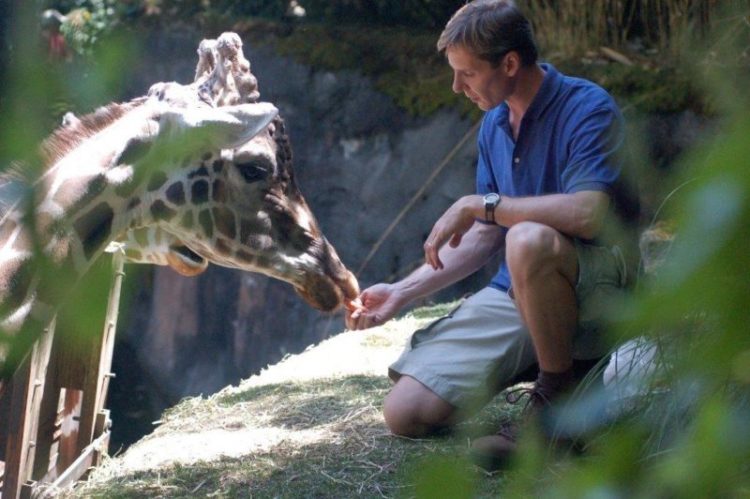
By Jim Knox
The frigid blast hit me the instant I stepped outside. While two degrees Fahrenheit was not surprising for a January morning in New England, it was bracing. Before I eased into the comfort of my warming car, I gazed around me, sweeping from north, to east, and then south. I thought of the Whitetail deer and the Red-shouldered hawks in the forest and wetland surrounding me and how they would need to eat to generate vital body heat to survive the freezing day ahead and even colder night to follow. I then thought of the countless woodland denizens who would sleep off the coldest and harshest months of the year, safe, secure, and warm…or at least relatively warm…beneath the frost line of the rock-hard ground. One among these creatures, a cousin from the far north, immediately came to mind.
In a world of nature’s extremes, the Arctic Ground Squirrel, Spermophilus parryii, goes to the head of the class. Like most of the wild’s most astounding residents, this rodent doesn’t stand out by sheer appearance. With a cream-colored belly and a brownish back flecked with fine white spots, North America’s largest ground squirrel blends in well in its arctic domain. At 19 inches in length and just 3.5 pounds in weight, it is a modest beast. Yet, what our little Arctic neighbor lacks in size, it more than makes up for in ability. With a perfectly calibrated body, metabolism, and lifestyle, the Arctic Ground squirrel is designed for life in one of the coldest habitats on the planet. Ranging from northern Canada to Alaska, to Siberia, these small mammals utilize their unmatched adaptations to conquer extreme cold.
So just how does this creature achieve what none of the world’s other 6,500 or so mammal species can accomplish? Specifically, how does it drop its body temperature more than 70 degrees to employ an entirely novel survival strategy among the planet’s mammals? The short answer is, we know the basics, but the finer mechanisms have proven elusive. Here’s what we know.
In order to survive brutal Arctic conditions, Arctic Ground Squirrels hibernate for up to nine months each year. In August, as the temperatures begin their plummet, the ground squirrels seek shelter underground in hibernacula (communal hibernation chambers). It’s here that they enter a form of turbo-charged hibernation known as torpor. This extreme metabolic slowing of the body drops heart rate, respiration, and other bodily processes to a baseline maintenance threshold. Unlike their amphibian neighbors, the Wood Frogs (which also live above the Arctic Circle), which enter a state of continuous suspended animation, the ground squirrels rouse from their torpor every three weeks to shiver and use stored body fat. By doing this the large rodents enter a comfortable, or euthermic, temperature range of about 95 degrees Fahrenheit (4 degrees below their norm of 99 degrees). By rewarming in this manner for one to two days, these creatures can then endure a mercury plummet where, incredibly, their body temperatures drop below freezing—to an astounding 27 degrees Fahrenheit!
This utterly unique capability comes at a cost, however. In order to withstand such extremes that would prove fatal to all other mammals and most of the world’s species, the ground squirrels deplete approximately one third of their body weight by burning stored fat. To accomplish this these ultimate survivors expand their menu beyond that of their close kin to include not only diverse plant species such as roots, grasses, flowers, seeds, lichens, fungi, and berries but also to gorge on insects, other invertebrates, eggs, chicks, birds, carrion, lemmings, non-related young of their own species, and even young Snowshoe Hares! These voracious omnivores consume everything possible during the brief Arctic summer to make it through the long Arctic winter.
Combining natural physical adaptation with behavioral adaptation, the squirrels have learned to exploit a good thing. Expanding their selection beyond their traditional tundra, lake shore, meadow and riverbank habitats, these opportunistic rodents have moved in for the excellent accommodations, setting up shop in loosened well-drained soils along road shoulders throughout the Alaskan roadway system.
Yet, such success has caught the hungry eyes of others. With expanding habitat and stable numbers throughout their range, the ground squirrels have attracted the attention of an army of predators including Snowy Owls, Gyrfalcons, Rough-legged Hawks, Golden Eagles, Arctic Foxes, Gray Wolves and Grizzly Bears. Such seasonal abundance provides stability and resilience to delicate Arctic food webs.
In the Arctic Ground Squirrel, nature’s extremes have forged a unique, resilient, and indispensable creature which offers us a glimpse into what is possible when natural ability is coupled with a dash of adaptation.
Jim Knox serves as the Curator of Education for Connecticut’s Beardsley Zoo and is a proud member of The Explorers Club. He enjoys sharing his passion for wildlife conservation with audiences in Connecticut and beyond.




